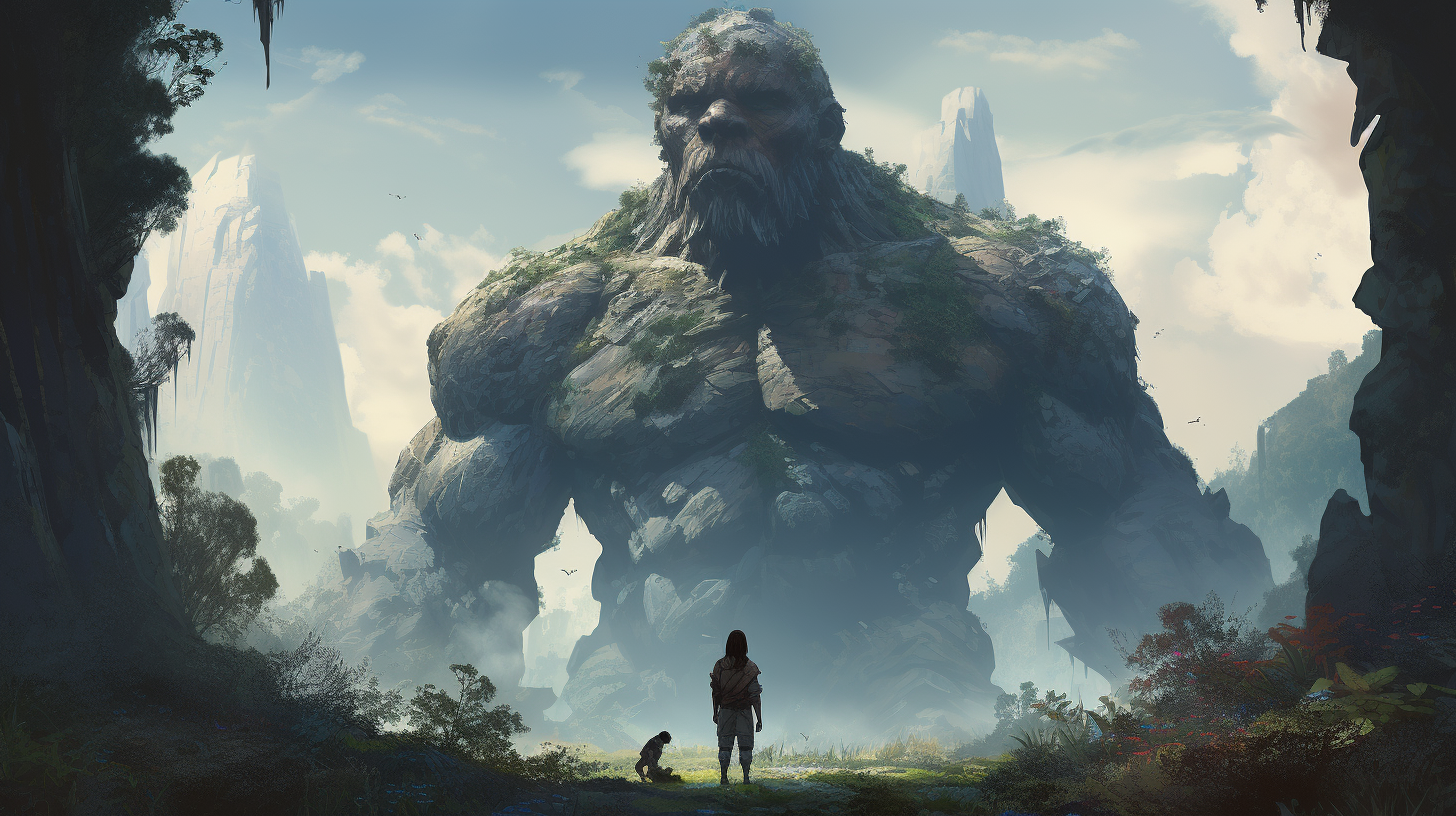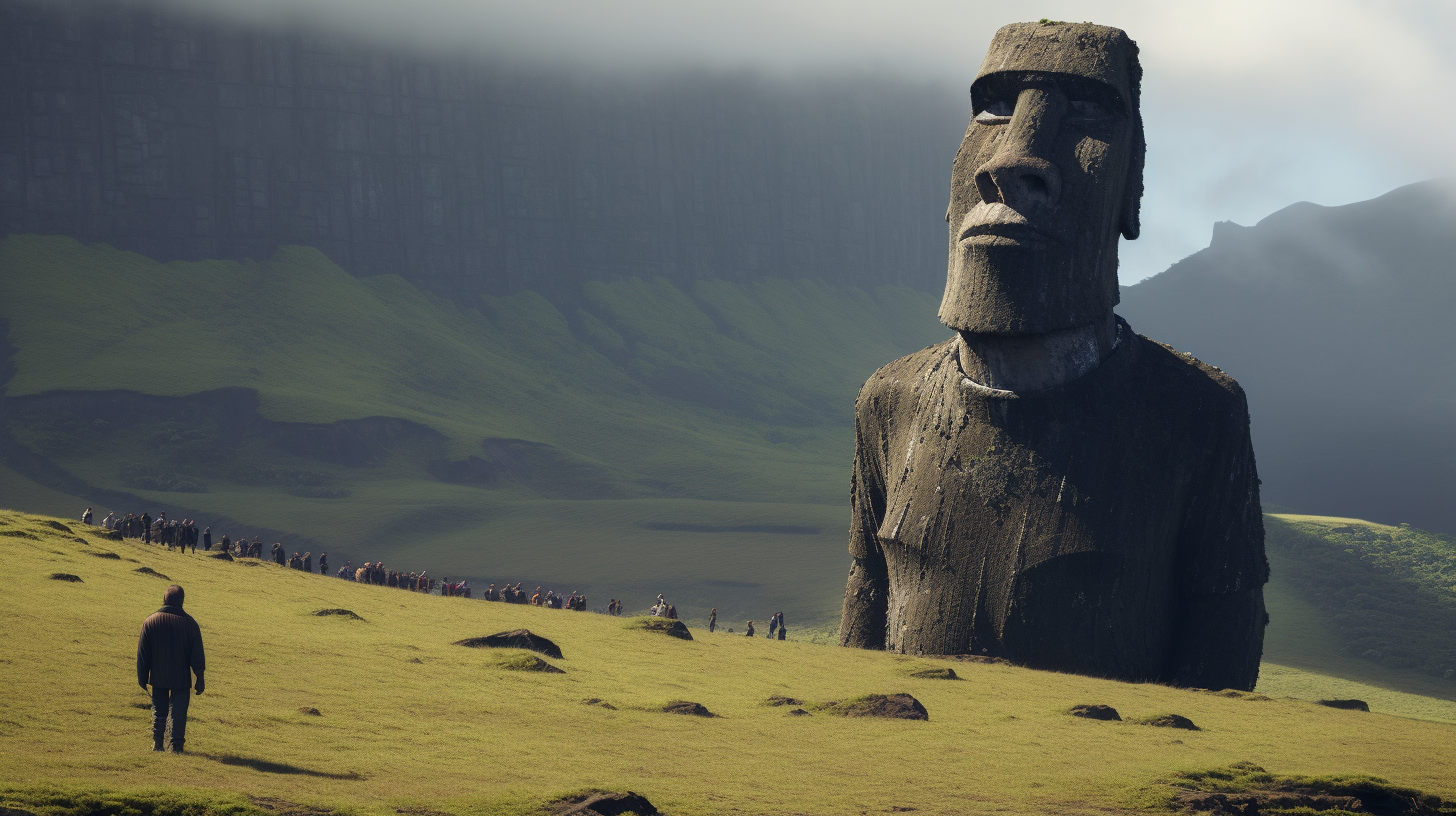The Southeast Pacific Ocean harbors a place shrouded in mystery and isolation – Rapa Nui, better known as Easter Island. Situated over 1,100 miles from the nearest inhabited island and more than 2,000 miles from mainland Chile, Easter Island has captured the fascination of explorers, historians, and ancient astronaut theorists alike.
What sets this remote island apart from the rest of the world are the nearly 300 massive stone figures known as the moai. These colossal statues, with most facing away from the sea, have intrigued researchers for centuries.
Standing between 15 to 70 feet tall and weighing up to a staggering 165 tons, their creation poses a profound question: why did the people of Easter Island go to such great lengths to build these monumental figures?
When asked today, the Rapa Nui people, the island’s inhabitants, attribute the construction of the moai to the honoring of important ancestral ariki or rulers.

However, some ancient astronaut theorists have put forth a more unconventional theory – that the moai may have been erected by a lost race of giants who once inhabited the island.
The intriguing accounts of C.F. Barons, a member of the Dutch expedition team that first encountered Easter Island in 1722, add a layer of mystery to this theory.
Barons described some of the priestly class of inhabitants as goliaths, mentioning that they encountered individuals towering at approximately 15 feet in height.
Further complicating the historical narrative are the distinctions between two groups of inhabitants on Easter Island: the short ears and the long ears. The long ears, often described as giants, constituted a separate race from their short-eared counterparts.
They were known for their elongated earlobes and occupied the priestly caste, directing the creation and transportation of the statues around the island.
The sheer size of the megaliths on Easter Island has led some to speculate that they were indeed made by giants. This notion finds echoes in legends from various parts of the world, suggesting a connection between megalithic sites and ancient giants.

However, a cloud of uncertainty engulfs the island’s history. Despite having supported a population of up to 15,000 people before its western discovery, Easter Island underwent a rapid decline.
Only 52 years after explorer James Cook’s visit, the island’s moai statues lay in ruins, and its population had dwindled to a mere 700 inhabitants.
What could have caused such a dramatic decline? Notably, there is no mention of giants in historical accounts from this period, leaving a tantalizing gap in our understanding of the island’s history.
Some ancient astronaut theorists posit an intriguing theory regarding the disappearance of Easter Island’s population. Archaeologists have uncovered unfinished moai statues abandoned in quarries, along with scattered tools. It is a mystery why the construction suddenly halted and what became of the priestly caste of giants overseeing the work.
Could it be that Easter Island was the site of a genetic experiment conducted by non-human entities, as some theorists suggest? They propose that isolated locations like islands, high mountains, and peninsulas were chosen to prevent interference or contamination of these experiments.
Video:
Intriguing as these theories may be, the true story of Easter Island remains elusive. The moai statues continue to stand as silent sentinels of a past that defies easy explanation. While we may never unlock all the secrets of this enigmatic island, the allure of Easter Island and its mysterious past will undoubtedly continue to captivate the human imagination for generations to come.

14 thoughts on “Easter Island’s Ancient Connection to Ancient Giants”
Comments are closed.